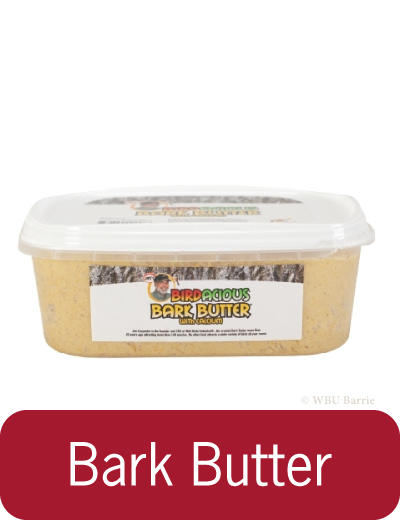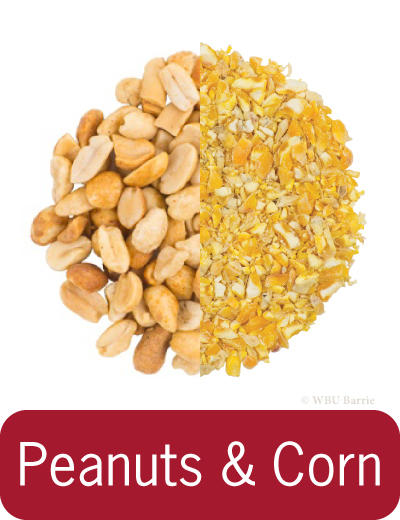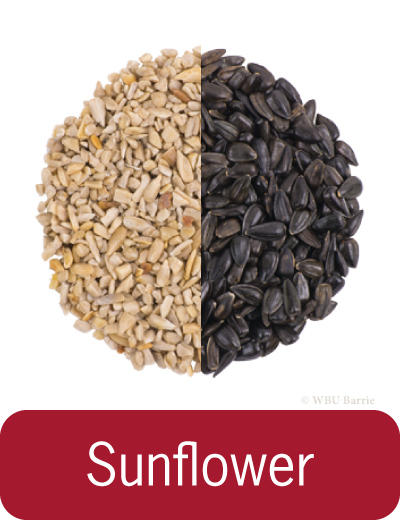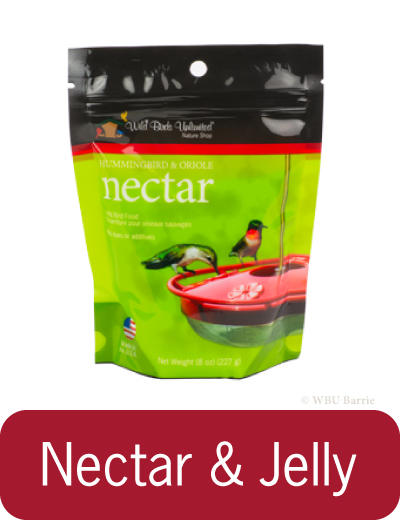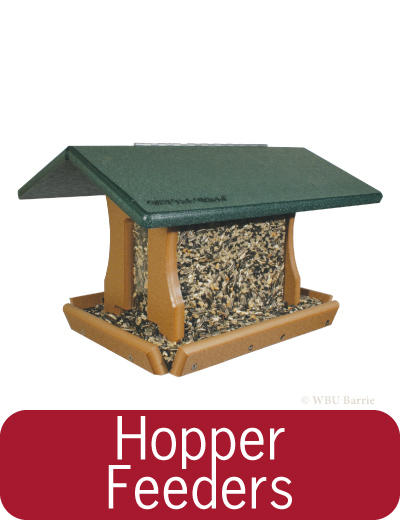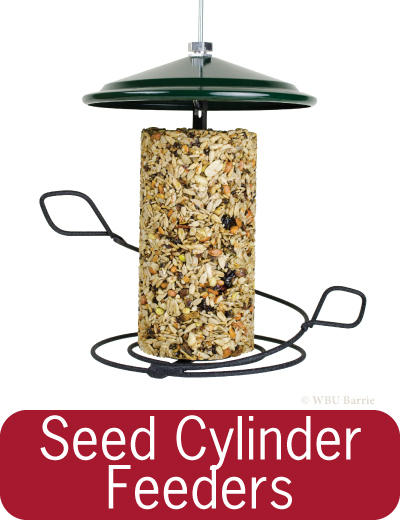Attracting Downy and Hairy Woodpeckers to Your Backyard
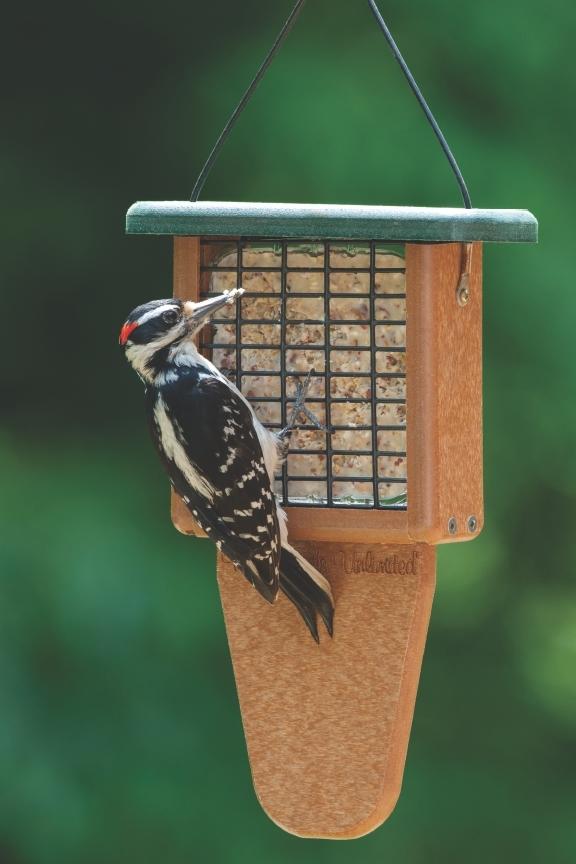 Downy and Hairy woodpeckers are widely distributed across North America and are common feeder visitors here in Simcoe County
Downy and Hairy woodpeckers are widely distributed across North America and are common feeder visitors here in Simcoe County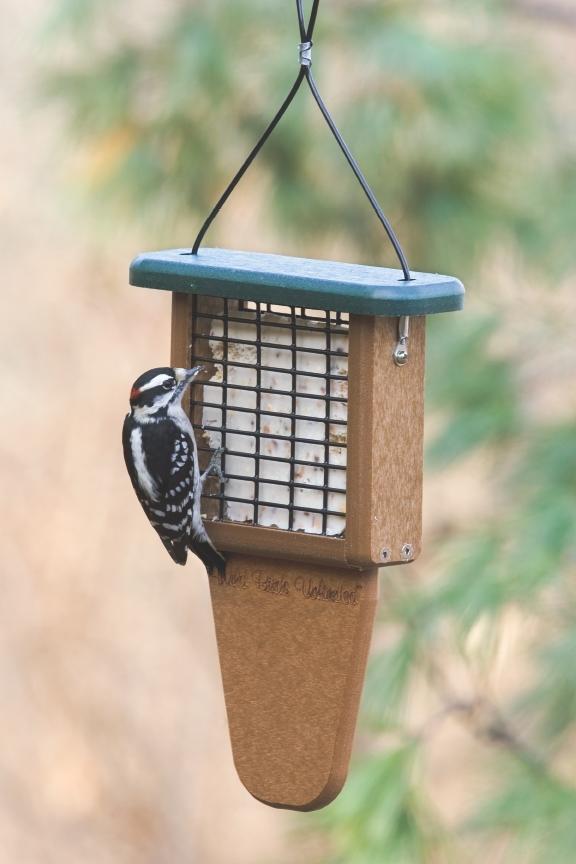 , where they enjoy suet and sometimes seeds. These woodpeckers are the only common woodpeckers that show a vertical white stripe on the back. Males of both species have a red patch on the back of the head with females looking very similar just without the red patch.. Juveniles may have a wash of red, orange, or (rarely) yellow on the crown. Neither species changes their plumage seasonally and the Juvenile plumage is similar to adults.
, where they enjoy suet and sometimes seeds. These woodpeckers are the only common woodpeckers that show a vertical white stripe on the back. Males of both species have a red patch on the back of the head with females looking very similar just without the red patch.. Juveniles may have a wash of red, orange, or (rarely) yellow on the crown. Neither species changes their plumage seasonally and the Juvenile plumage is similar to adults.
The active little Downy Woodpecker (right) is a familiar sight at backyard feeders and in parks and woodlots, where it joins flocks of chickadees and nuthatches, barely outsizing them. The Hairy Woodpecker (left) is the larger of two lookalikes, but is still a small but powerful bird that forages along trunks and main branches of large trees. It wields a much longer bill than the Downy Woodpecker's almost thornlike bill.
How do I to Tell Downy and Hairy Woodpeckers Apart?
Overall size and bill size and shape are the most useful characters for distinguishing the two species in the field. There are subtle plumage features that can also be useful when a good closeup view is possible as well. The Downy is a relatively small bird at approximately 6.5″ long; where the Hairy is closer in size to an American Robin, averaging 9.25" long. On the Downy, the bill is rather short and thin, about one-third as long as the width of the Downy's head. The bill on the Hairy is long and chisel-like, and if turned around, is about as long as the width of the head itself.
The white outer tail feathers on the Downy Woodpecker are usually barred in black, giving a spotted effect. However, while these black bars are most easily visible from below, they may appear white from above, so a proper viewing angle is very important. In most of the Eastern U.S., Hairys have completely white outer tail feathers. Black bars can be found on the outer tail feathers on birds of the Pacific race and in Newfoundland. For more information on distinguishing the two species, check out our blog.
Do They Migrate?
Woodpeckers are non-migratory, year-round resident throughout their range.
Foods
Suet, suet blends, Bark Butter, peanuts, tree nuts, mealworms, Seeds: sunflower, sunflower chips, cracked corn, fruits, nectar.
Feeders
Birdbaths (Water)
Water is essential to all birds and providing a bird bath means they don’t have to travel great distances to find water. Water in a bird bath should be cleaned regularly as birds defecate, leave bits of food and feathers in the bath, not to mention leaves and other items that can end up in a bath. In the winter, heated birdbaths provide an excellent place for birds to drink. During the warmer months the WBU Water Wigglers and Solar Fountains create moving water in your birdbath, making the bath even more attractive to birds. WBU Barrie carries a variety of plastic, metal and clay birdbaths and accessories, as well as heated birdbaths for the colder months. Visit our page on birdbaths for a selection of styles as well as accessories like brushes, solar fountains, water wigglers and Fountain Fresh Water Clarifier.
Nesting
 Both Downy and Hairy Woodpeckers nest in cavities they excavate and will use a man-made nesting box as well. Since Downys tend to use nest boxes in the winter as roosts to escape the cold, you may want to put up the Three-Woodpecker House in the fall. Downy and Hairy Woodpeckers prefer to nest in forests or on forest edges with large trees such as parks, wooded suburbs and yards.
Both Downy and Hairy Woodpeckers nest in cavities they excavate and will use a man-made nesting box as well. Since Downys tend to use nest boxes in the winter as roosts to escape the cold, you may want to put up the Three-Woodpecker House in the fall. Downy and Hairy Woodpeckers prefer to nest in forests or on forest edges with large trees such as parks, wooded suburbs and yards.
Fun Facts
-
In winter, small birds tend to lose heat faster than larger birds due to the ratio of surface area to weight. As a result, Downy Woodpeckers in Alaska are about 12% larger than they are in Florida.
-
A woodpecker’s pointed tail feathers are especially strong and rigid. The tail bone, lower vertebrae and supporting muscles are also large in comparison to other birds allowing a woodpecker's tail to serve as a prop that supports their weight as they climb.
-
For more information visit this great resource: Lab of Ornithology at Cornell - All About Birds - Downy Woodpecker
-
For more information visit this great resource: Lab of Ornithology at Cornell - All About Birds - Hairy Woodpecker



